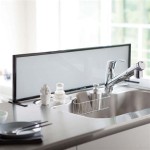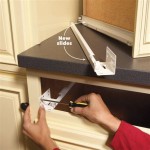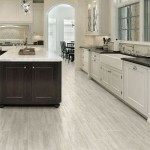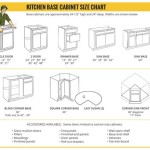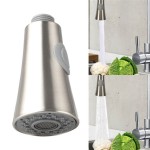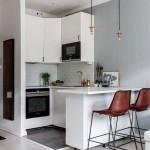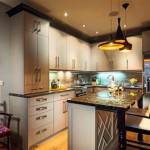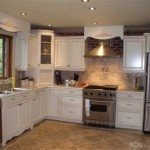Backsplash Tile Pictures for Kitchen: A Comprehensive Guide
A kitchen backsplash serves a dual purpose. Functionally, it protects the wall behind the cooktop and sink from splashes, stains, and heat. Aesthetically, it provides an opportunity to enhance the overall design of the kitchen, adding texture, color, and visual interest. Tile is a popular choice for backsplashes due to its durability, water resistance, and wide range of design options. Examining various backsplash tile pictures can inspire homeowners and designers alike to create a kitchen that is both practical and visually appealing.
The selection of backsplash tile is a significant decision in kitchen renovation or construction. It requires careful consideration of various factors, including the existing kitchen design, budget, maintenance requirements, and personal preferences. The goal is to choose a tile that complements the cabinets, countertops, and flooring while also providing the necessary protection and ease of cleaning. Before diving into tile options, understanding the key aspects to consider is paramount.
Understanding the Functionality of a Backsplash
The primary function of a kitchen backsplash is protection. Constant exposure to splattered food, grease, water, and cleaning agents can damage walls over time. Without a backsplash, the wall paint or wallpaper can peel, stain, or even develop mold. Tile, being non-porous and easy to clean, provides a durable barrier against these elements. Specifically, areas directly behind the stovetop and sink are most susceptible to damage and require a robust and easily maintainable backsplash.
Consider the distance between the cooktop and the range hood. This distance impacts how much grease and steam reach the backsplash. If the distance is significant, a more elaborate backsplash extending upwards may be beneficial. Similarly, the presence of a deep sink often leads to more water splashing, necessitating a wider and taller backsplash in that area. The functional aspect should always be prioritized, influencing the material, size, and coverage of the backsplash.
Furthermore, the choice of grout can influence the functionality of the backsplash. Darker grout colors are more resistant to staining than lighter ones. Epoxy grout is another excellent option, known for its superior stain and water resistance compared to cementitious grout. While epoxy grout can be more expensive and require professional installation, its long-term durability and ease of maintenance often justify the initial investment.
Exploring Various Tile Materials and Styles
The variety of available tile materials ensures that there is an option to suit every budget and aesthetic. Each material offers unique benefits and drawbacks that must be considered during the selection process. Common materials include ceramic, porcelain, glass, stone, and metal.
Ceramic tile is a popular and cost-effective choice. It is durable, water-resistant, and comes in a wide range of colors, sizes, and shapes. Porcelain tile, a type of ceramic tile, is even more durable and water-resistant due to its higher density. Porcelain is an excellent choice for high-traffic areas and kitchens where spills are frequent.
Glass tile offers a sleek and modern look. It is non-porous, easy to clean, and reflects light, making the kitchen appear brighter and more spacious. However, glass tile can be more expensive than ceramic or porcelain tile and may require a متخصص installation to avoid chipping or cracking.
Stone tile, such as marble, granite, or travertine, provides a natural and elegant look. Each stone tile has unique variations in color and pattern, adding character to the kitchen. However, stone tile can be more porous than other materials and may require sealing to prevent staining. It also tends to be more expensive than ceramic or porcelain options.
Metal tile, such as stainless steel or copper, adds a contemporary and industrial touch to the kitchen. It is durable, heat-resistant, and easy to clean. However, metal tile can be prone to scratches and fingerprints, requiring frequent cleaning. It also can be more expensive and limit the design aesthetic.
Beyond the material, the style of the tile plays a crucial role in the overall design. Subway tile, a rectangular tile typically arranged horizontally, is a classic and versatile choice that complements various kitchen styles. Mosaic tile, composed of small pieces of tile arranged in a pattern, adds texture and visual interest. Penny tile, small round tiles often used in vintage-inspired kitchens, provides a unique and charming look. Large format tiles create a seamless and modern appearance. The selection of material and style is intrinsically linked and must align with the overall kitchen design.
Analyzing Aesthetic Considerations for Backsplash Design
The aesthetic appeal of the backsplash is just as important as its functional aspect. The backsplash should complement the existing kitchen design, enhance the overall visual appeal, and reflect the homeowner's personal style. Several factors to consider include color, pattern, texture, and scale.
Color is a powerful tool in kitchen design. A neutral-colored backsplash, such as white, gray, or beige, provides a timeless and versatile backdrop that complements various cabinet and countertop colors. A colorful backsplash, such as blue, green, or yellow, adds personality and visual interest. Consider the existing color palette of the kitchen and choose a backsplash color that complements or contrasts effectively.
The pattern of the backsplash can also significantly impact the overall design. A simple pattern, such as a horizontal or vertical arrangement of subway tiles, creates a clean and understated look. A more complex pattern, such as a herringbone or chevron pattern, adds visual interest and sophistication. Mosaic tiles offer endless possibilities for creating intricate and unique patterns. Complex patterns may require professional installation to ensure accurate alignment and a visually appealing result.
The texture of the backsplash adds depth and dimension to the kitchen. Textured tiles, such as those with a raised or uneven surface, create a tactile and visually interesting surface. Consider the existing textures in the kitchen, such as the smooth surface of the countertops or the grain of the cabinets, and choose a backsplash texture that complements or contrasts effectively. Too much texturing, however, can make cleaning more difficult.
The scale of the backsplash tiles should be proportional to the size of the kitchen. In a small kitchen, smaller tiles can create a more spacious feel. In a large kitchen, larger tiles can create a more dramatic impact. Consider the scale of the other elements in the kitchen, such as the cabinets and countertops, and choose a tile size that complements them. For instance, using very small mosaic tiles in a large kitchen with high ceilings might look disproportionate and create a visually busy effect. Using larger tiles can streamline the look and make the space feel more cohesive.
Lighting also plays a key role in how the backsplash appears. Natural light can enhance the texture and color of the tile, while artificial light can create different moods and highlight specific features. Position under-cabinet lighting to accentuate the backsplash and improve visibility while working at the countertop. Consider the type and intensity of the lighting when choosing the backsplash tile to ensure the desired aesthetic effect.
Backsplash tile design is not limited to just the area between the countertop and upper cabinets. Some kitchens benefit from extending the backsplash to the ceiling, particularly behind the range hood, creating a focal point and adding drama. This design choice is often seen in modern and contemporary kitchens and works especially well with bold tile patterns or materials. Another option is to create a feature wall using tile, extending the backsplash beyond the traditional boundaries to create a unique and eye-catching design element.
Ultimately, the best strategy for selecting backsplash tile involves gathering inspiration from various sources, including online resources, magazines, and showrooms. By examining numerous backsplash tile pictures and understanding the different materials, styles, and aesthetic considerations, homeowners and designers can make informed decisions and create a kitchen backsplash that is both functional and visually appealing.

Kitchen Backsplash Tile Designs That Are Envy Instilling Mir Mosaic

65 Kitchen Backsplash Ideas For Every Design Style In 2025

What Size Tile For Kitchen Backsplash Finding The Right Fit

Choosing Kitchen Backsplash Tile Abby Organizes

10 Pack Stack White And Gold 11 8 In X10 23 Metal L Stick Backsplash Tile For Kitchen Bathroom 9 26 Sq Ft Case

Backsplash Tile Ideas For Your Kitchen Flooring America

77 Inspiring Kitchen Backsplash Ideas For 2024

Hdb Mnh Quartz Tiles More Kitchen Backsplash Materials To Consider

How To Tile A Kitchen Backsplash Tiling Advice

11 White Backsplash Ideas With Nary A Subway Tile In Sight
Related Posts

